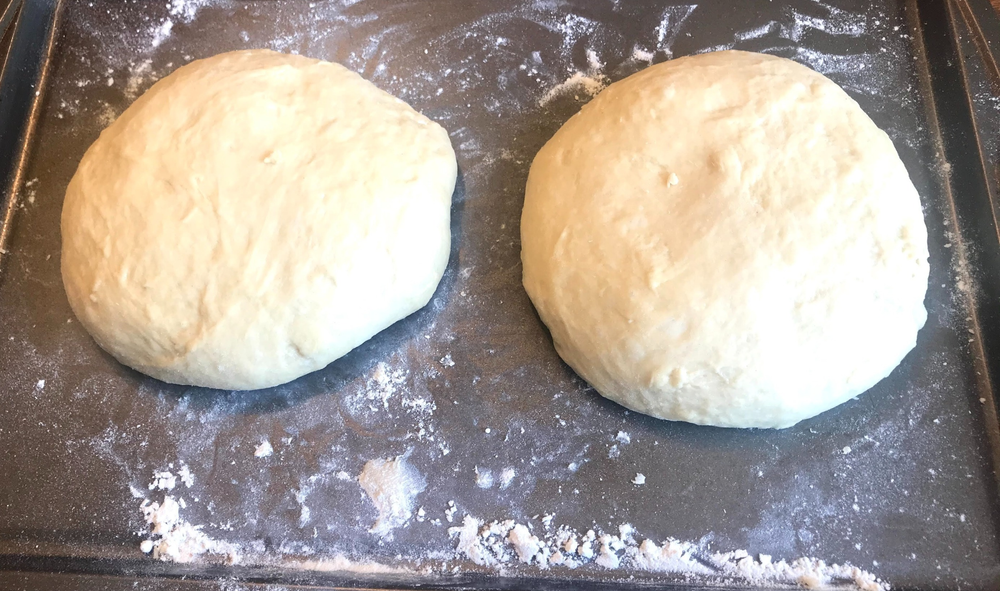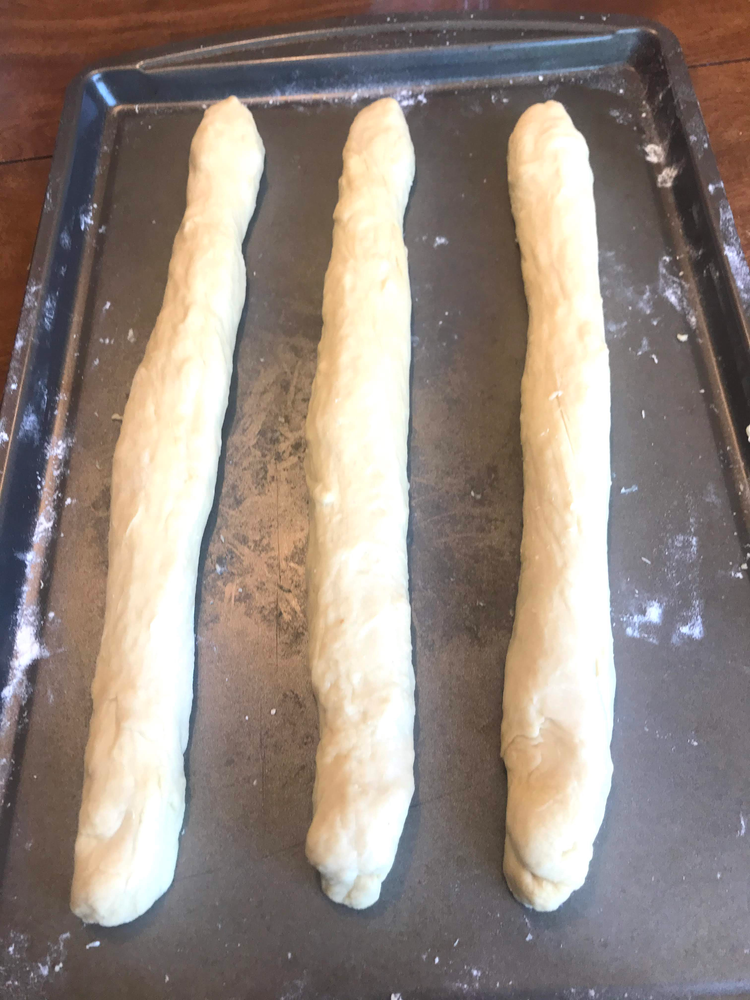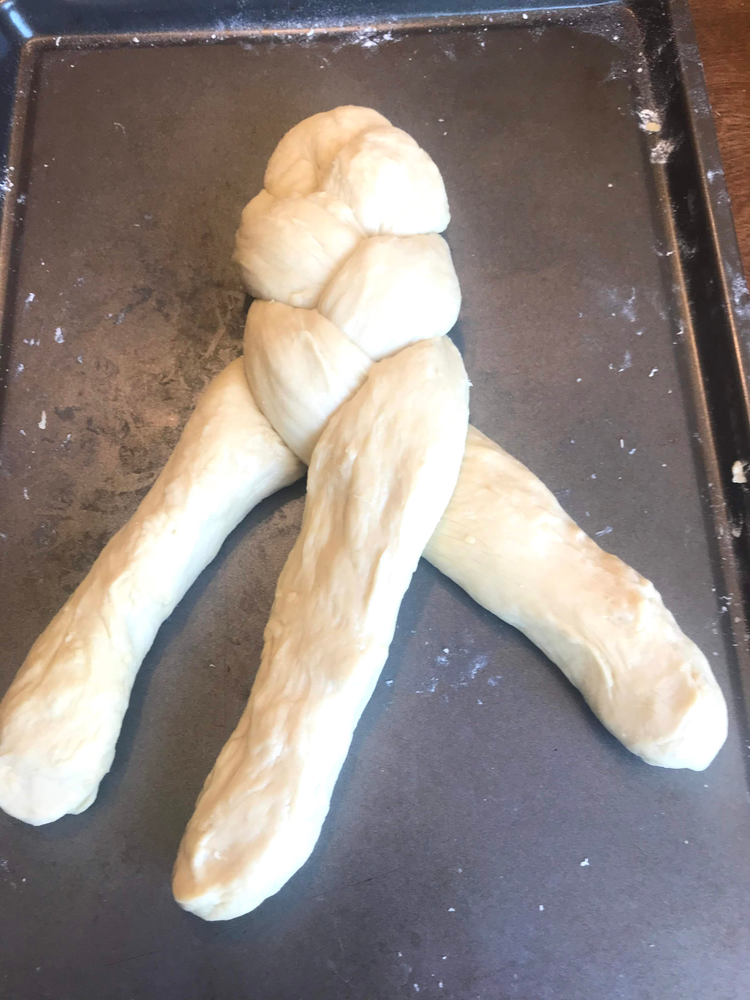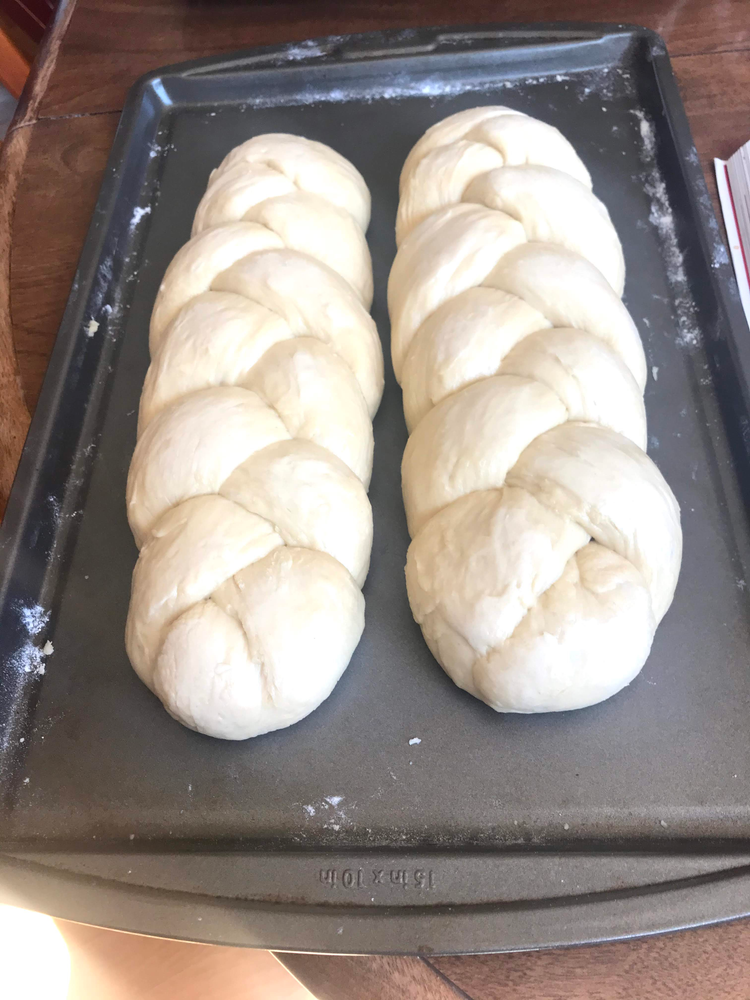Heavenly Challah
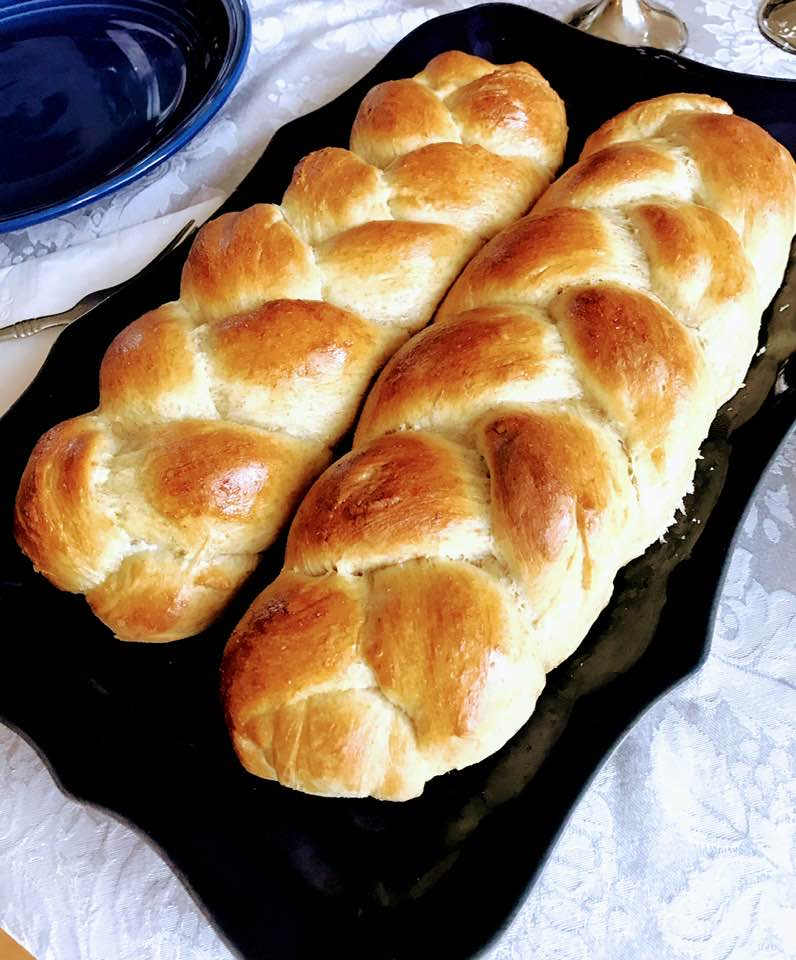
“Eh…hem…Excuse me, could you please pass the Challah?”
If you’ve never had it, you’re missing out. If you’re buying it from a store, it’s time to ditch the preservatives and taste the real deal.
Challah, (pronounced “Hallah”) is the bread that goes with everything. It’s a perfect accompaniment to meat, fish or vegetarian dishes. It makes fabulous French toast. You really shouldn’t eat a bowl of soup without its glorious presence. Any sandwich is transformed by its perfect flavor. It’s special for holidays, but of course, can be enjoyed any day.
You don’t have to spend half a day making challah. There are several recipes that only take a couple hours, but the easiest way overall is to let the bread machine mix the dough while you prepare the rest of the meal. If you don’t have a bread machine, you need one! Thrift stores are a great place to find them-often times brand new.
The history of challah bread goes back to at least the fourteenth century, but it has its roots in other ancient Jewish breads dating back much further. Historically, it’s been used for religious purposes, as it symbolizes the double portion of manna God gave to the Israelites in the desert. The double portion was so they would not have to gather manna on the sabbath.
The word, challah, comes from a Hebrew word for “portion.” During bible times, a portion was set aside for the priests. On Shabbat, (the Hebrew word for sabbath), the two challah loaves sit in the center of the table underneath an embroidered cover to represent the layer of dew on the manna. When the blessing over the bread is recited, the cover is taken off and Voila! Two beautiful loaves are revealed, but don’t last long!
The three strands of dough can symbolize Abraham, Isaac and Jacob or Sarah, Rebecca and Rachel. For believers in Yeshua, it can also represent the father, the son and the holy spirit. When challah is served on Shabbat, and during the Jewish holidays, its sustenance reminds us of God’s continued provision throughout the year. The words Yeshua spoke in John 6:35 give even more meaning when we partake of the bread, “I am the bread of life; whoever comes to me will never hunger; and whoever believes in me will never thirst.” Later in John, Jesus continued, “I am the living bread that came down from heaven. Whoever eats this bread will live forever.”n
Challah is a bread that has endured throughout the centuries and is well known for it’s fluffy texture, and slightly sweet taste. You can add raisins to the dough and poppy seeds or sesame seeds on top, but the “plain” version is my family’s favorite. There are four and six-stranded versions, but the three-stranded challah is the simplest to make.
When I’m in a pinch for time, the bread machine dough cycle comes in handy!
Here’s the recipe:
1 Egg and water to equal 1 1/4 Cup
1 tsp. active dry yeast
1 tsp. salt
3 Tbs. sugar
3 Cups King Arthur unbleached flour
1 Cup King Arthur whole-wheat flour
2 egg yolks, reserve the whites for later
5 Tbs. unsalted butter
Break 1 egg into glass measuring cup and add water to equal 1 1/4 Cup of liquid. Add to bread machine. Add softened butter, salt, sugar, yeast, separated egg yolks, and flour. Select the dough cycle.
After the dough cycle is done, let it rise for an hour in the bread machine. Remove dough and separate into two equal parts. Separate those two parts into three strands. Braid the three strands on a greased cookie sheet, beginning in the middle and pinching the ends together. Pick up the entire loaf and flip it toward you to finish braiding the other end. Repeat with the other three strands. Cover loaves with a tea towel and let rise for 1-2 hours. Bake at 375 degrees for 10 minutes. Remove loaves and brush with whisked egg whites. Continue baking for an additional 12 minutes, until the top is golden.
